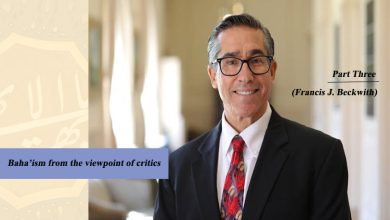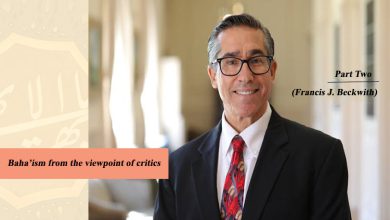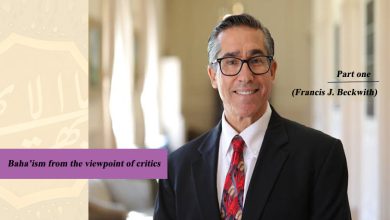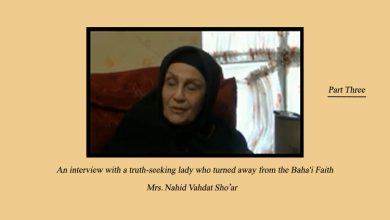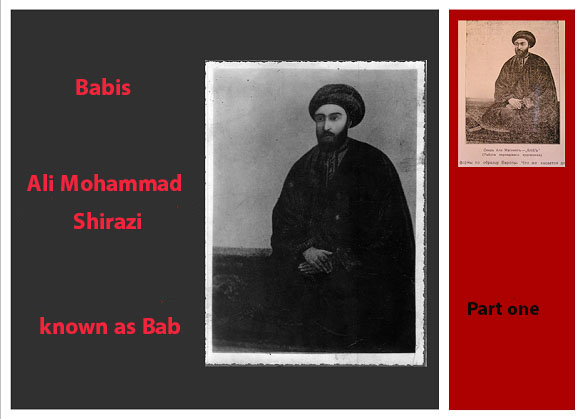
The founder of Bab; Mirza Ali Mohammad Shirazi
1235-1266 AH
Birth Bab
At first, we deal with the birth and childhood of the person who claimed Babism known as Bab. On the first day of the month of Muharram in 1235 AH in the city of shiraz, a woman named Fatemeh Beigom gave birth to a son from her husband Mirza Mohammad Reza Bazzaz, who was named Ali Mohammad.
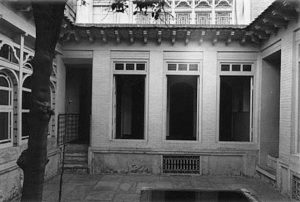
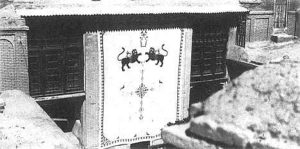
Childhood period
Ali Mohammad lost his father during childhood and was placed under the care of his uncle named Seyyed Ali. The Baha’is attach great importance to the uncle and say that the Bahaullah has written the Book “Iqan” for him.
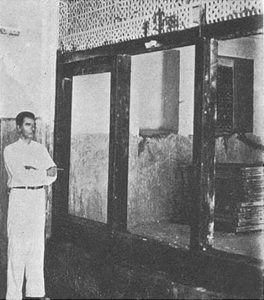
His chamber in Bushehr
As a child, he was sent to an old-fashioned primary school to learn the basics of Persian language, recitation of the Qur’an, and arithmetic. He studied at that school for about five years, and according to some sources, he was not very talented in this work and was punished for being late to school and laziness.
In his book “Arabic Bayan” in page 25, Mirza Ali Mohammad writes in memory of his childhood, ” Say, O my teacher Mohammad, do not beat me… and if you wanted to beat me, do not do more than five times and also on the flesh of my body”.
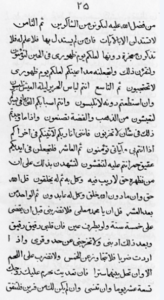
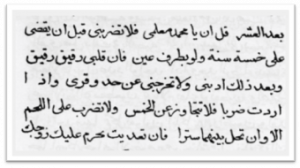
The teacher of his childhood
In the Persian book of Motale’al Anvar (summary of the History of Nabil) on pages 63 and 64, he writes: Hazrat Bab’s aunt took him to study with Sheikh Abed. Although Hazrat Bab did not want to study, he went to Sheikh Abed’s school in order to indulge his aunt. Sheikh Abed was a pious man and is considered one of the students of Sheikh Ahmad and Seyyed Kazem Rashti.
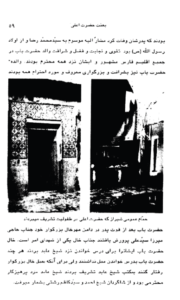

Introducing the book “History of Nabil” by Zarandi
The History of Nabil, written by Mohammad Zarandi alias Nabil Azam, is the most important history of the Baha’is, accepted by Mirza Hussain Ali, and its version is unique. Shoghi Effendi translated this history into English and added a detailed introduction to it with some footnotes and published it under the title “The Dawn – Breakers”; then, by the order of the assemblies of Egypt and Sudan, the latest book was translated into Arabic by Abdul Jalil Sa’ad and published and distributed under the name of Motale’al Anvar, and finally, Eshraq Khavari upon the order of the National Assembly of Iran, compiled a Persian summary of this Arabic history, which was accepted by Shoghi and has been reproduced several times by the Publishing Committee of Amri, and its name is “A Summary of Nabil’s History”.
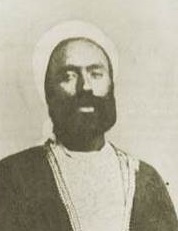
In the third part of the History of Zohoor al-Hagh on page 263 about the sites of Shiraz, Fazel Mazandarani refers to the old-fashioned primary school of Sheikh Abed in the neighborhood of Ghahveh Olia and the studying of Bab in the school.
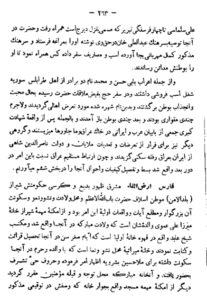
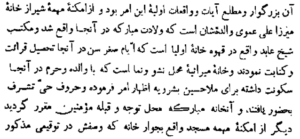
Motivation to attend the class of Seyed Kazem
As we said, the teacher of the school was Sheikhi and therefore, from his childhood, the views of Sheikhieh had been placed in Bab’s mind, and his attention and respect for Sheikh Ehsaei and Seyyed Rashti were attracted. On this occasion, at an older age, he traveled to Iraq with the desire to visit Seyyed Kazem and benefit from his presence, and for a while he attended Seyyed Rashti’s seminary and studied and learned the views of the Sheikhieh.
Duration of stay in Karbala
In the Arabic book of Motale’al Anvar, in the footnote of page 59, after mentioning the studying of Bab in Ghahveh Olia School, he writes, “…and at the beginning of Rabi’ al-Awwal in the year 1257 AH, he returned to his country in Persia, after staying in Najaf and Karbala for seven months”.
On page 28 of the book “Summary of History of Nabil” by Zarandi regarding the presence of Bab in class of Seyed Kazem, this phrase has come, “… after three days, the same young man came to visit the Seyed and sat near the door, listening to his teaching politely and humbly.”
Fazel Mazandarani, under pages 200 and 437 of the History of Zohoor Al-Hagh, called to witness the third part of two historical documents that before the death of Seyed Rashti, Mirza Ali Mohammad had come to his class in Karbala for several months and studied until Soyouti and the margent of Mullah Abdullah.
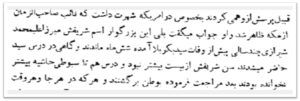
Fazel Mazandarani in the book “Asrar al-Athar” has included cases of the Bab’s writings in which Seyed Kazem Rashti has been interpreted as a teacher.

Page 479 of the third part of Zohur al-Hagh and page 489 of Rahiq Makhtum quote Mirza Ali Mohammad as follows:
“And you did not follow the light of Ja’far Al-Alawi and witnessed the content of their verses”.

Acknowledging that the prophets are Ommy or untaught
In the book “Khatabehay-e Mubarak” or the Blessed Sermons on page 7, Abdul-Baha writes: “holy appearances are inherently sacred; they cannot be adapted from another. Others should acquire science and adapt holy appearance from them, not them from others. All divine manifestations have been like this; “Abraham, Moses, Christ, Mohammad, Bab, and Bahaullah did not enter any school…”
Acknowledging that the Prophet of Islam is untaught
On page 188 of the third volume of the book Makatib, which is the same collection of letters of Abbas Effendi, three volumes of which were published under his supervision, and the fourth volume under the supervision of the committee, he confesses as follows:
“In the Arab Bedouin, he was born among the uninformed tent dwellers, and he became acquainted with them, and he flourished, and he did not learn any word of education, and was apparently devoid of reading and writing.”

The claim that Bab is untaught
On page 19 of the treatise, he writes, “Among the Shiite sect, it is generally certain that he has not studied in any school and has not acquired knowledge from anyone, and all the people of Shiraz testify this; Nevertheless, he has appeared among the people as a man of extreme virtue.”
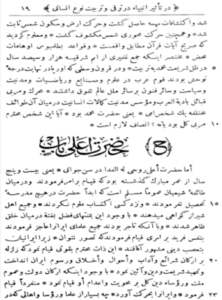

Justifying the claim that Bab is untaught
On page 9 of Sahifeh Adliyeh or the Book of Justice, in describing himself, Bab writes: “He grew up among the foreigners, and was not taught falsehood by anyone, but he was a mere untaught in such works.”
Fazel Mazandarani on pages 191 to 193 of the first volume of the book Asrar al-Athar writes, “And since the study of the Bab, at a young age in the school of Shiraz, before a perfect teacher in the status and amount appropriate to those days, it is certain in history and the presence of a few in the presence of Haji Seyed Kazem Rashti in Karbala, in his youth, is also explicit in their own words, and their beautiful calligraphic works are available to the public. He meant by being Ommy is that he has not studied theological education in order and gradually, from beginnings to higher degrees, in a way that was common in those days, such as Sheikh Ehsaei and Seyed Rashti and the scholars of their companions and so on and they called this as Ommiyat or being untaught as a comparison and approximation like his great grandfather …”
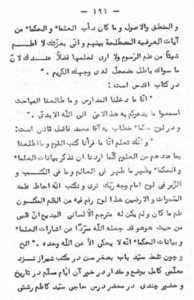
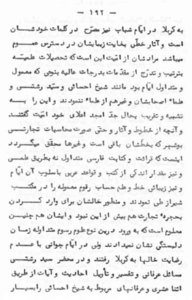
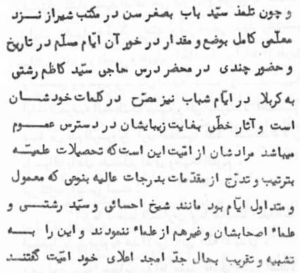
Justifying the claim of Ommiyat
And what can be achieved from the scripts and works and even the form of commercial calculations of Bushehr that remain in their script, and others, is that he studied the common Persian reading and writing, not in a scientific way as well as a small amount of Arabic books and rules in the style of those days and also the beauty of calligraphy and arithmetic in the Shiraz school, and their intention to involve in business was not more than this, and it is also clear that he did not show any attachment to entering this type of customary science common at the time; but in his youth, with the dissatisfaction of the elders, he went to Karbala and in the presence of Seyed Rashti, he heard many mystical issues and interpretation of hadiths and verses through the Twelver or Asna Ashahri and mystics related to Sheikh Ehsaei and entered Imami jurisprudence through their method. As can be used from their works, they were included in the articles of Sheikh and Seyed, above all other matters.
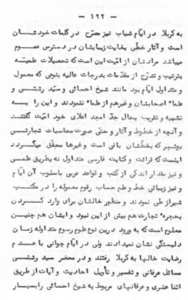
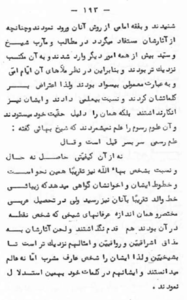
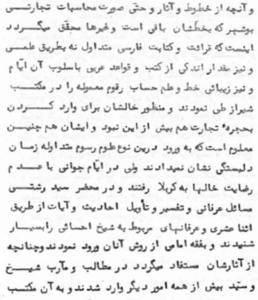
Asrar al-Athar, volume 1, pp. 192 & 193
Austerities during adolescence
On page 66 of the Summary of Nabil History, he writes, “Hazrat Bab was often engaged in business in the city of Bushehr, and although the weather was extremely hot, he would go up on the roof for a few hours during the day and pray. “The sun was shining in extreme heat… They worshiped from dawn to sunrise and from noon to evening… Hazrat Bab looked at the sun at sunrise, reasoning with God with the tongue of heart like a lover paying attention to his sweetheart …the ignorant people thought that they were sun-worshippers”.
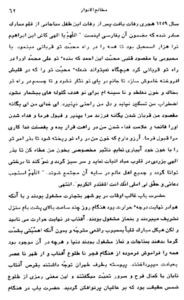
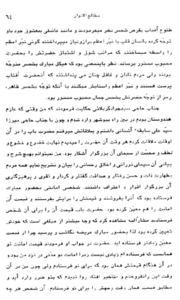
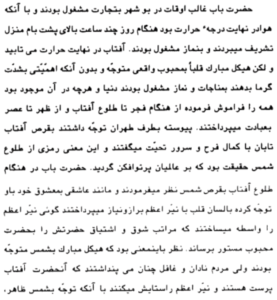
Mirza Aga Khan Kermani Babi also confirms on page 276 of the book Hasht Behesht or Eight Paradises that Bab used to stand on the roof from dawn to dusk during the days when the heat of Bushehr boiled water in a jug and recited in front of the sun.
Seyed of Zekr or recitation
According to pages 34 and 35 of the first volume of Al-Kawakab al-Doriyah, Mirza Ali Mohammad became known as Seyed of Zekr in Bushehr due to this isolation, roof-sitting, and biding beads and recitation, and from that time on, he collected and transcribed Islamic prayers and supplications, and little by little, he wrote prayers and supplications, and in addition to supplications, he also wrote short treatises describing the authorities of the Imams, and especially the Promised Hojjat, which was based on Shiite beliefs and indicated the sobriety and correctness of those opinions.
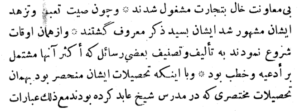
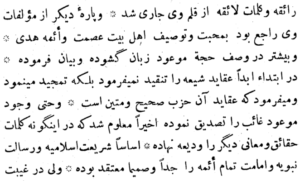
The ground for the Bab’s claim
After the passing away of Seyyed Kazem, because the Sheikhieh was looking for the Fourth Pillar of Faith and the Bab of the Absent Imam, some of his disciples claimed this position and tried to make other Sheikhis aware of themselves. As Haj Karim Khan Kermani called himself the “Fourth Pillar” and Mirza Shafi Tabrizi called himself a “Pure Shiite of the Imams” … finally, Mirza Ali Mohammad also gave up his job and profession and tried to take the presidency of the Sheikhieh under the title of “Bab of the Absent Imam”.
Writing the exegesis of Surah Al-Baqara
According to Bab’s writings on pages 61 and 62 of the second volume of Asrar al-Athar, Mirza Ali Mohammad, after hearing the news of Seyed Rashti’s death in the month of Zilqa’dah in 1259 AH, wrote a book on the exegesis of Surah Al-Baqarah, the first volume of which is in the exegesis of the first part of Surah Al-Baqara. But it has not been published yet, but its manuscripts are available, and we will bring some evidence on the issue of Qaimiyah or authenticity from the manuscripts. It ended a year later, and this shows that he was preparing for such a claim.
Suspicious background
On page 36 of the first volume of the book Asrar al-Athar, Ayati writes that Bab, while writing a letter from Bushehr to his uncle on the year of Seyyed Rashti’s death, sent a message to some ulema that he had not yet reached puberty for Amr or cause and should not be given a relation contrary to religious beliefs.
Thus, it may be said that unknown factors forced him to consider himself an official; but he postponed it.
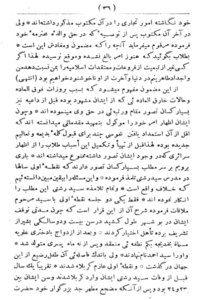
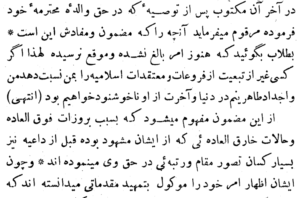
Claim of Babism
Six months after the passing away of Seyed Kazem, on the night of the fifth of Jamadi al-Awali in 1260 AH, Mirza Ali Mohammad Shirazi filed a lawsuit against one of the Sheikhis named Mullah Hussein, who was from Khorasan’s Bashroyeh. The Baha’is celebrate such a night every year as the Mab’as of the Primal Point, and the origin of his history, known as the Badi or Innovative History, begins from that night.
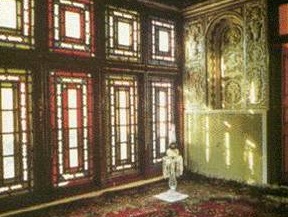
Story of the claim Bab
The story of that night, with the removal of the baseless embellishments, is that a group of Sheikhi scholars who were busy searching for their missing and had suffered in the process, came to Shiraz and one of them, Mullah Hossein Bashroui, met Bab. He goes to his house based on the acquaintance they already had with each other in the field of the lesson of Seyyed Rashti (Volume 1 of Al-Kawakba al-Dorya, p. 39), and there, Mirza Ali Mohammad, who sees his intense desire to know the successor of Seyed Kazem Rashti, introduces himself as the owner of the position and the Bab of the Imam of Age.
Evidence of the claim, exegesis of Surah Yusuf
Since Bashroui wants proof of the Bab’s claim, Mirza Ali Mohammad, at his request, writes brief subjects in the exegesis of the first verses of Surah Yusuf (this exegesis was completed by Bab and was called “Qayyum al-Asma” and is found in manuscript). Then, having seen the writing, Mullah Hossein accepted his Babism.
According to Bahaullah, on page 180 of the Book of Iqan printed in Egypt: “This book is the first and greatest, and the greatest of all the books of the Bab.”
The first part of this book, which is called Surah Al-Mulk, is found on pages 21 to 24 of the book “Rahiq-e Makhtum”.
Bab’s belief in exegesis of Surah Yusuf
In the book “Rahiq-e Makhtum” on page 22, Eshraq Khavari has narrated part of the Surah Al-Mulk as follows:
“God has decreed that this book should come out in the exegesis of the best stories from Mohammed bin Hassan bin Ali bin Mohammed bin Ali bin Musa bin Jaafar bin Mohammed bin Ali bin Hussein bin Ali bin Abi Talib Ali Abdu Allah be Hajj when all the worlds-mentioned eloquent.”
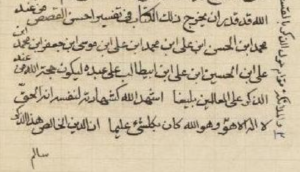
Qayyum al-Asma, exegesis of Surah Yusuf (Surah Al-Mulk)
Belief in Imam Zaman in the beginning of the claim
In Asrar al-Athar under the word Bab (second volume), after reminding the belief of Sheikhieh in the necessity of the existence of an intermediary between the absent Imam and the people, Fazel Mazandarani on page 11 writes about Mirza Ali Mohammad:
“And in the first book of his verses, that is, the explanation of Surah Yusuf, he raised the call as Babism. His saying: … Know O people of the earth, that God has placed two gates with the door before (Sheikh and Seyed) to teach you his Amr… and his saying: and the Proof of God, the Remnant of God, Sahib al-Zaman (PBUH) brought out to gate of remembrance”. (These words have been narrated from the Bab’s Sahifeh Makhzuneh which is from his words in the same year 1260 AH.)

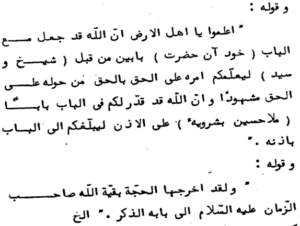
Introducing the book “Personal Article of a Tourist”
Abbas Effendi, who was only in Iran until the age of 8, wrote a book on the history of Bab in the Ottoman soil in 1303 AH and changed the historical facts according to his desire, and to deceive the reader, he called it “Personal Article of a Tourist” who has traveled all over Iran and wrote and published the opinion of the disinterested. A string of deceit and injustice!
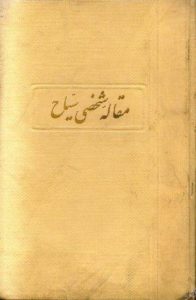
Study the continuation of the article in part two…


